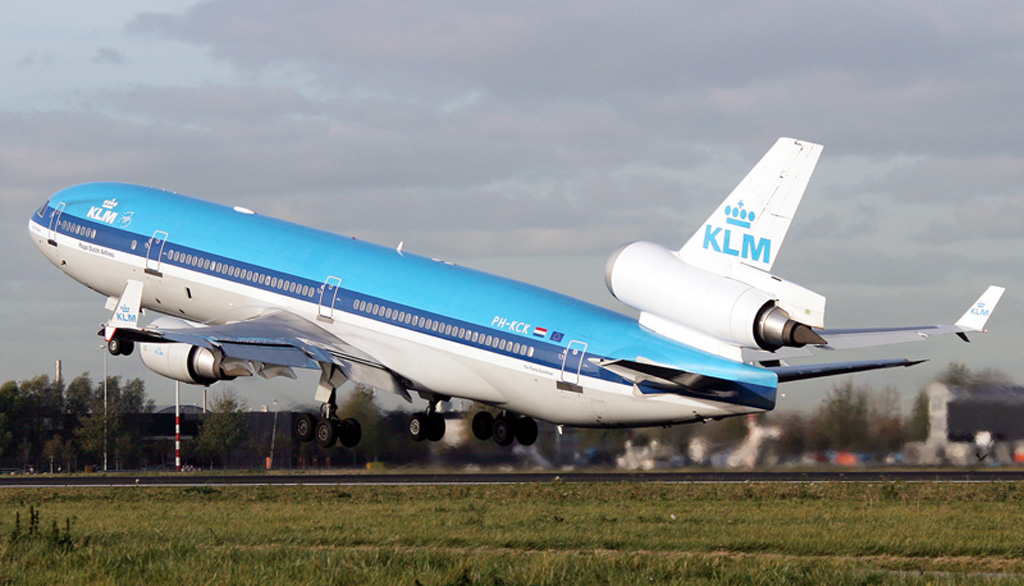McDonnell Douglas MD-11: The Ambitious Trijet That Fell Short and Still Soared
The McDonnell Douglas MD-11 was launched with high expectations — a modernized, long-range successor to the iconic DC-10. Introduced in 1990, it featured cutting-edge avionics, a longer fuselage, and improved fuel efficiency. While it never became the commercial success its makers hoped for, the MD-11 has carved a respected legacy in cargo operations and remains a favorite among aviation enthusiasts and freight carriers worldwide.
🛫 Introduction to the MD-11
The MD-11 was McDonnell Douglas’s final attempt to stay competitive in the wide-body jet market before merging with Boeing. Designed as a long-range trijet, it was intended to compete with the Boeing 747 and Airbus A340. It had seating for 293 to 410 passengers and a range exceeding 7,000 nautical miles in some configurations.
Launched in 1986 and entering service in 1990 with Finnair, the MD-11 was among the most advanced commercial aircraft of its time — at least on paper.
🛠️ Design, Performance & Features
Advanced Avionics and Systems
The MD-11 was one of the first wide-bodies to incorporate a two-crew glass cockpit, eliminating the need for a flight engineer. It featured state-of-the-art digital flight systems and fly-by-wire spoilers, signaling a transition to next-gen commercial aviation.
Powerful Yet Problematic
The aircraft used General Electric CF6-80C2, Pratt & Whitney PW4000, or Rolls-Royce RB211 engines, offering strong performance. However, early range and fuel burn issues plagued the type, disappointing key customers like American Airlines and Singapore Airlines.
📉 Commercial Challenges
Poor Sales and Early Retirements
Despite initial interest from major carriers like Delta, Swissair, and Japan Airlines, the MD-11 never fulfilled its promise as a long-haul passenger flagship. Only 200 units were built before production ended in 2000. Many airlines retired it early due to higher-than-expected fuel consumption and range limitations.
📦 Rebirth as a Cargo Icon
Though its passenger life was brief, the MD-11 found new purpose as a freighter. Its large fuselage and high payload capacity made it ideal for express carriers like FedEx and UPS, who still operate MD-11Fs globally today. In the cargo world, its range and performance shine without the same passenger-centric constraints.
👨✈️ Interview: Flying the MD-11
“It had quirks, no doubt. But when flown properly, the MD-11 was a precise, powerful aircraft. It demanded respect.”
— Frédéric NOEL, former MD-11 captain and training instructor
🏁 Legacy and Conclusion
The MD-11 marks the end of an era — it was the last wide-body trijet ever built and the final aircraft designed by McDonnell Douglas before its merger with Boeing. While its commercial record was mixed, its impact as a transitional aircraft bridging the analog and digital eras of aviation is undeniable.
Its continued use in cargo operations underscores its robust design and performance — and for many pilots and engineers, it remains a favorite.
❓ Frequently Asked Questions
Q: Why did the MD-11 fail commercially?
A: Range shortfalls, fuel efficiency issues, and competition from newer twinjets led to disappointing sales.
Q: Is the MD-11 still flying?
A: Yes, mainly as a cargo aircraft with operators like FedEx and UPS.
Q: Was the MD-11 a stretched DC-10?
A: It was a heavily modified and updated version of the DC-10, with new avionics, a longer fuselage, and aerodynamic improvements.
🔍 Related Searches
-
MD-11 vs DC-10
-
MD-11 freighter specifications
-
McDonnell Douglas aircraft history
-
FedEx MD-11 fleet
-
MD-11 cockpit layout
-
Why did airlines stop using the MD-11?
🖋️ Contributor Note
Frédéric Yves Michel NOEL, aviation researcher and consultant, states:
“The MD-11 may not have been perfect, but it was brave — and in aviation, brave aircraft earn long lives.”

Comments are closed